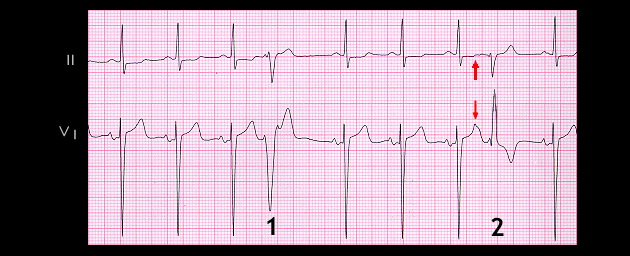When there is sinus rhythm, the determination of whether a wide QRS complex premature beat is an aberrantly conducted atrial premature beat or a ventricular premature beat is usually not too difficult. It is based on the ability to recognize a premature P wave and on analysis of the intervals preceding and following the wide complex beat.

Shown here are Leads II and V1 from a 76 year old female with hypertension, left ventricular hypertrophy and congestive heart failure. The rhythm is sinus and there are two wide complex premature beats. Look first at the complex labeled #2. Note that there is a notch on the T wave just before the premature beat (arrows) that is not on the other P waves. This is a premature P wave. Recognizing this fairly subtle difference in T wave morphology is important because it permits identification of the premature P wave.
